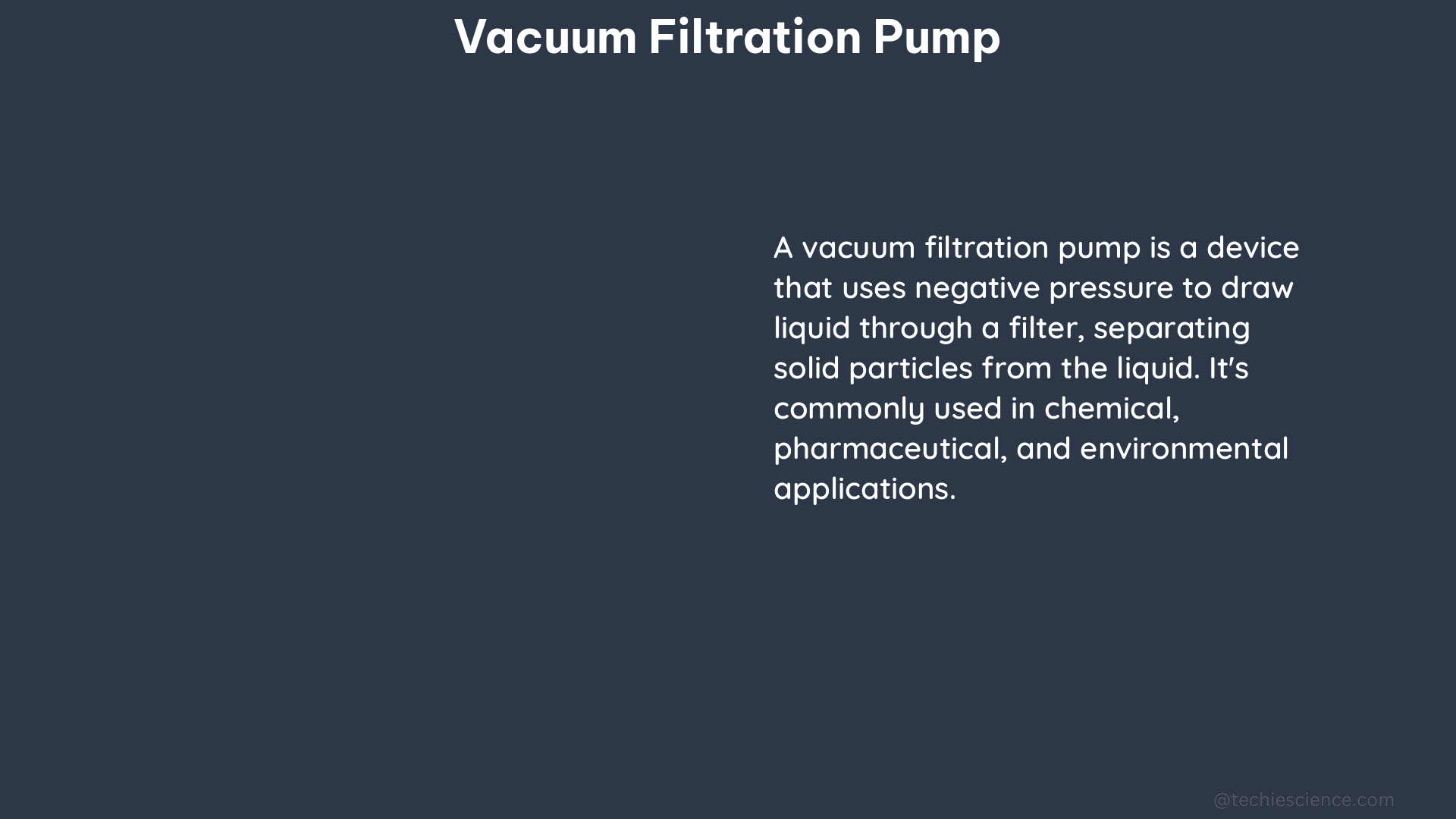Vacuum filtration pumps are essential laboratory equipment used for collecting particulate matter from suspensions, such as bacteria or precipitates, through filter paper of a known pore size. These pumps are often used in conjunction with filter apparatus, filter flasks, and filtration manifolds. The membrane filtration technique, which utilizes vacuum filtration, is an accepted technique for testing fluid samples for contamination and is the preferred technique for water testing.
Factors to Consider When Selecting a Vacuum Filtration Pump
When selecting a vacuum filtration pump, it is crucial to consider the following factors:
Effective Area
The effective area of the filter paper is a crucial factor to consider. A larger effective area allows for a larger dust holding capacity, smaller resistance, and longer service life, albeit at a higher cost. The effective area of a standard 90 mm diameter filter paper is typically around 63.6 cm^2, while a 47 mm diameter filter paper has an effective area of around 17.3 cm^2. Choosing the appropriate filter size can significantly impact the efficiency and longevity of the vacuum filtration process.
Fiber Diameter
The fiber diameter of the filter paper is another important factor. A smaller fiber diameter provides better interception and higher filtration efficiency. Typical fiber diameters for qualitative filter papers range from 8 to 20 micrometers, while quantitative filter papers have fiber diameters between 2 to 8 micrometers. The smaller the fiber diameter, the more effective the filtration, but this also increases the resistance to airflow, requiring a more powerful vacuum pump.
Binder Content
The binder content of the filter material is also a consideration. A higher binder content increases the paper’s tensile strength, filtration efficiency, and resistance to hair loss, but it also increases the overall resistance to airflow. Typical binder contents for qualitative filter papers range from 2 to 5%, while quantitative filter papers have binder contents between 5 to 10%.
Technical Specifications
In addition to the factors mentioned above, the vacuum filtration pump’s technical specifications are crucial for safe and efficient operation. The pump should have belt guards in place during operation, service cords and switches free from defects, and should not be placed in an enclosed, unventilated cabinet or operated near containers of flammable chemicals.
Proper Use of Vacuum Filtration Assemblies

When using a vacuum-filtration assembly, it is important to pay strict attention to the liquid levels in the trap bottle and use a secondary trap bottle to prevent vapors and related odors from being emitted back into the laboratory or system exhaust. The trap bottle should be checked regularly and emptied as needed to maintain optimal performance.
Preventing Moisture Contamination in Vacuum Lines
When using a vacuum pump for lower pressures, a cold trap should be fitted to condense volatiles and prevent moisture contamination in the vacuum line. The cold trap should be located between the system and vacuum pump, be of sufficient size and cold enough to condense vapors present in the system, and checked frequently for blockages. Typical cold trap temperatures range from -40°C to -80°C, depending on the application and the volatiles present in the system.
Ensuring Safe and Efficient Operation
To ensure safe and efficient operation of the vacuum filtration pump, it is important to follow these guidelines:
- Ensure that the pump is placed in a well-ventilated area, away from any flammable chemicals or materials.
- Regularly inspect the pump for any signs of wear or damage, such as frayed cords, loose connections, or worn bearings.
- Follow the manufacturer’s instructions for maintenance and servicing, including changing the oil or lubricating the pump as recommended.
- Use appropriate personal protective equipment (PPE), such as gloves and safety glasses, when handling the pump or the filtration assembly.
- Properly dispose of any hazardous waste generated during the filtration process, in accordance with local regulations.
By considering the factors mentioned above and following best practices for safe and efficient operation, you can ensure that your vacuum filtration pump performs reliably and effectively in your laboratory or research setting.
References:
- How to Selection the Qualitative and Quantitative Filter Paper
- Experiment No. 7: Vacuum Filtration
- Vacuum Filtration
- Vacuum Pump Safety

The lambdageeks.com Core SME Team is a group of experienced subject matter experts from diverse scientific and technical fields including Physics, Chemistry, Technology,Electronics & Electrical Engineering, Automotive, Mechanical Engineering. Our team collaborates to create high-quality, well-researched articles on a wide range of science and technology topics for the lambdageeks.com website.
All Our Senior SME are having more than 7 Years of experience in the respective fields . They are either Working Industry Professionals or assocaited With different Universities. Refer Our Authors Page to get to know About our Core SMEs.